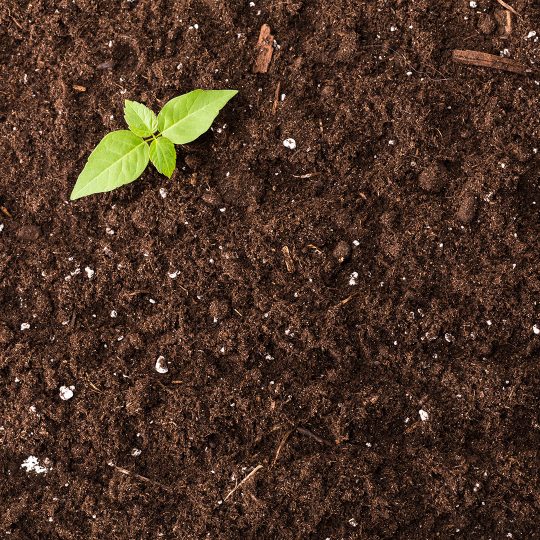4 Ways to Improve Poor Soil Quality
And Help Bring it Back to Life
Posted
July 19, 2018

Soil quality is an important factor in the health of your garden. Good soil leads to better plant production and helps keep pests away. There are ways to improve poor soil quality in your garden to make it the best it can be.
What is Good Soil Quality
How do you know if you’re already working with poor soil? Not being able to grow much of anything is one clue, and an onslaught of pests in another. Healthy soil will have good tilth—lots of organic matter in a suitable physical condition. It will be aerated and drained to retain enough moisture that it feels spongy, not hard and dry.
There are ways to test your soil to see what nutrients it may be lacking. Tests can be found in your local lawn and garden store, as can any store-bought supplement to help improve your soil.
Improving Poor Soil Quality
To get your garden soil in it’s best production position, keep the following in mind:
- Don’t tread on me. Stepping on the soil compacts it. Create a designated path around garden beds to help keep traffic out. Pathways made of wood chips and clover will even attract beneficial insects that fertilize the garden. Having the same, permanent garden area is even better, for it limits the need to re-establish the soil and any irrigation system.
- Can you dig it? Yes, you can. Using a digging fork is a better option for a smaller garden than a tiller. You want to gently loosen and aerate the soil without destroying the microorganisms that live in it.
- Much mulch. Whether starting a new garden or guarding against weeds in an established one, adding a layer of organic mulch is a must. Organic matter includes food scraps, grass clippings, manure, shredded leaves, or straw. Top the matter with about six inches of compost soil. Replenish the soil every year to give it a much-needed boost. Add organic matter in the fall, or two weeks before planting, to start the spring garden season right. Mulching saves time and money by reducing the need for weeding, watering, and fertilizing. The way you mulch depends on the climate. Heavy mulches are best in the off-season as well as hot, dry climates where moisture evaporation is high. Cool, rainy climates need lighter mulches so soil can soak up more sun.
- Introduce nutrient accumulators to soil. Certain plant species, like flowering comfrey, are used to reach into the soil and collect specific nutrients. Simply chopping up these plants and using them in mulch can save money on other expensive soil supplements.
If reducing compaction and adding organic matter doesn’t help improve your poor soil conditions, contact Elite Tree Care for more recommendations geared to your specific situation.